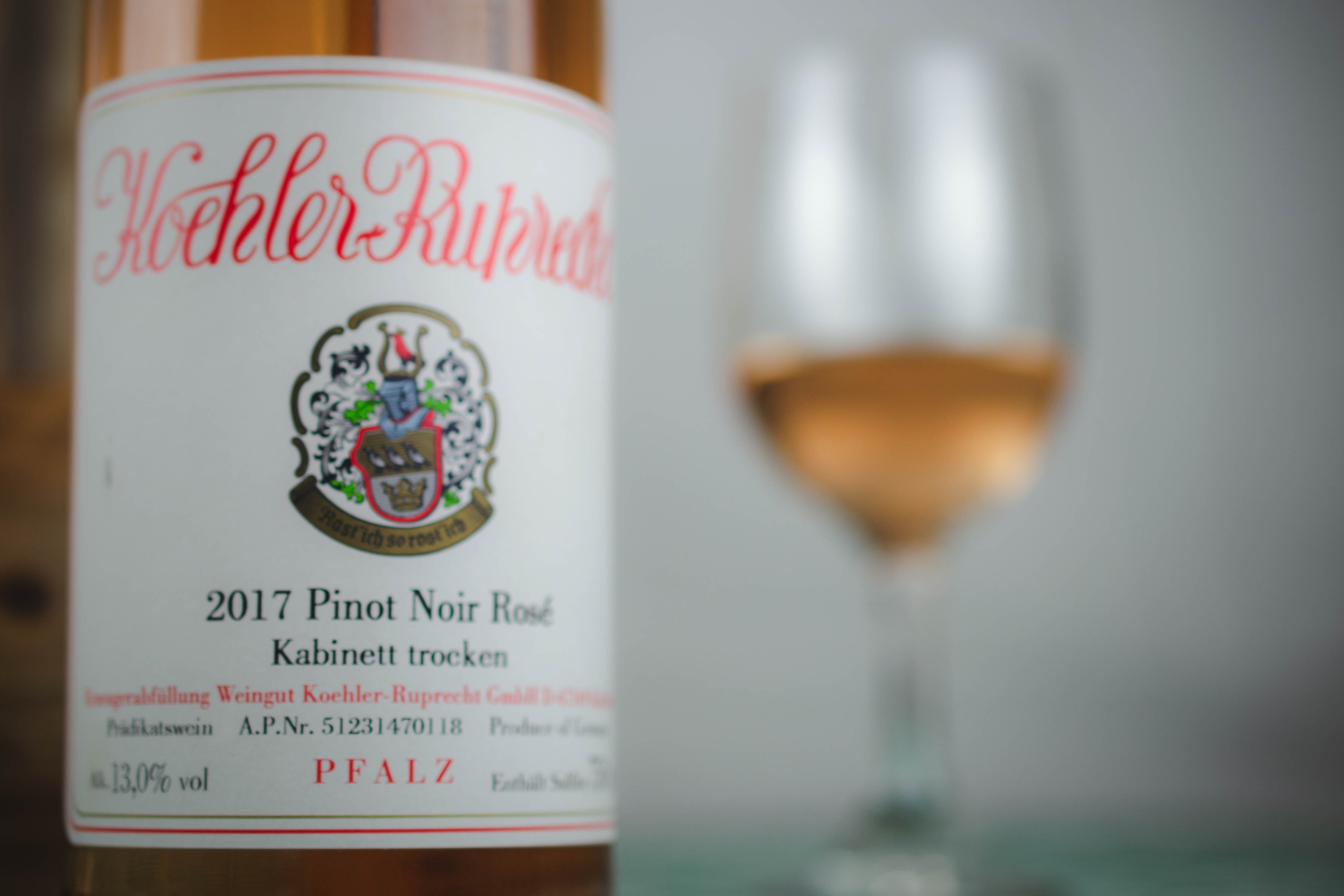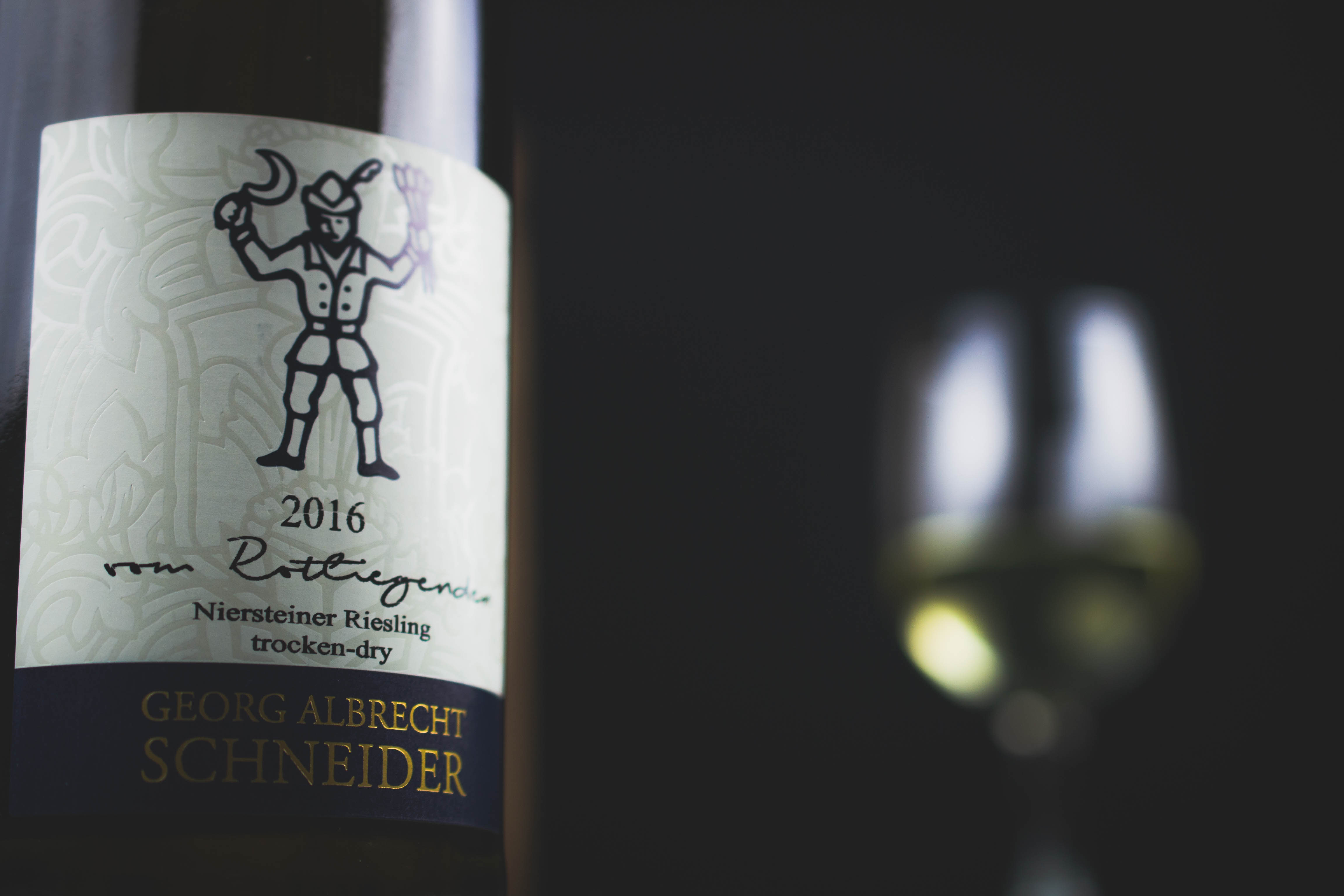Grape(s): Pinor Noir
Region: Pfalz, Germany
Winery: Koehler-Ruprecht
Style: Dry rosé
Tasting Notes: Raspberry, wet leaves, forest floor, earth; funky fresh.
Pairing Suggestions: If you’re outside and eating food, this is a good choice. Chicago Style Hot Dog, salads, spice-rubbed meats, hot wings, charcuterie, grilled fish, sushi.
TL/DR: Holy shit, I’m actually impressed with a rosé!
In many ways, I see rosé as the Chris Farley or John Belushi of wine. It is forever in a state of arrested development, always up for a good time, the life of every party, the perfect travel companion for street festivals, concerts, and bad decisions, but it’s not exactly the kind of wine that makes you want to settle down and start a cellar. Oh no! For that, you know you’re going to need a more stable red or white, willing to go the distance, because deep inside we all know that if we keep hanging out with rosé we’re eventually going to find it slumped in the corner with a needle hanging out of it’s arm after one speedball too many.
While I recognize not every rosé is the same, they do all kind of taste the same. After the first couple of sips you realize the color is a lie and it’s not what your brain expected it to be, but it has enough acidity to be refreshing and it tastes vaguely fruity, what’s to hate? So, you go ahead and drink it anyway. Look, I’m not trying to make anyone feel guilty; I’ve never met a rosé I wasn’t willing to drink, but I’ve also never really been impressed by one… until now.
Koehler-Ruprecht Pinot Noir Rosé Kabinett Trocken 2017 is the only rosé I’ve ever been impressed with. That may sound hyperbolic, but I promise you I’m not exaggerating. If you’ve heard me talk positively about a rosé in the past, I was just trying to be nice. This is the real deal and, if you know me, it kind of makes sense, because this is about as untraditional as a rosé can be.
Firstly, it’s German, which I didn’t even know was a thing. Doesn’t rosé usually come from Provence or California? Maybe I just don’t spend enough time in the rosé aisle of the store, but Germany is not a country I associate with this style of wine. That’s one of the things attracted my attention.
I first encountered this wine at an industry tasting with a friend, before we had even walked through the door there was buzz around this strange German rosé. We made it a point to seek it out and after tasting it, we just looked at each other in astonishment.
That’s the second thing, the taste. For me, Pinot Noir either tastes very fruity or very earthy, the best Pinot wines usually display a combination of both. I’ve also noticed that the heavier a Pinot is, the more likely it is to showcase earthy flavors. This is a medium bodied rosé that is driven by the earthy flavor profile, with very subtle hints of fruit. So, the winemaker was not only able to achieve a nice balance of flavor from the Pinot Noir grapes, but they were also able to present that as a truly unique expression of rosé.
Absolutely masterful.
Unfortunately, this wine is going to be a rare find. We ordered as much as we could get our hands on at work, and blew through those few cases very quickly before the vintage was sold out. The 2018 vintage is still a very nice rosé, but I was not as impressed with it. Perhaps a little more time in the bottle will allow it to develop, with a limited stock available to us, I doubt it will be on our shelves long enough for me to find out.
I guess the lesson here is not to let your bias steer you away from trying things you think you don’t like or, if you do, simply accept the fact you may miss out on something amazing.











